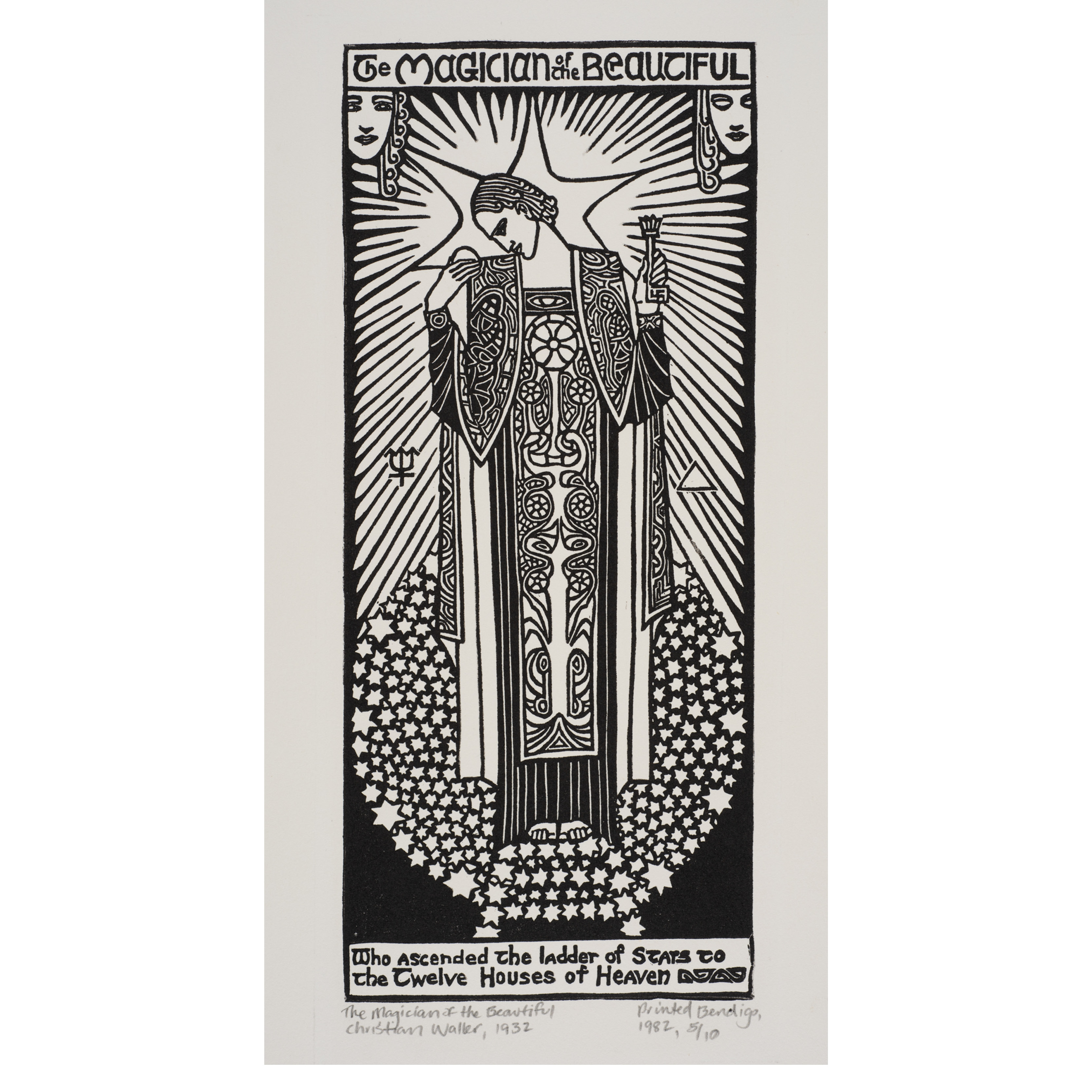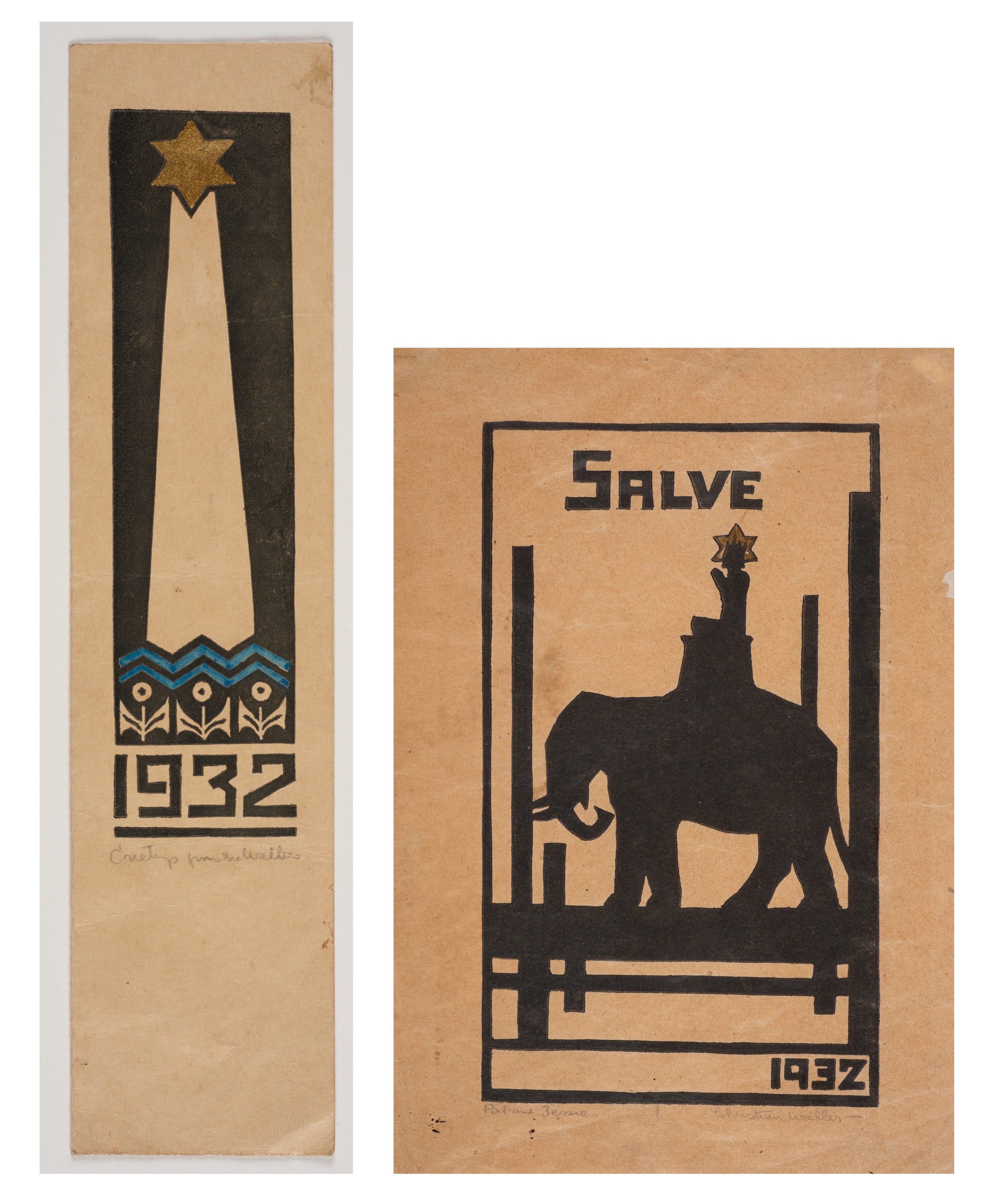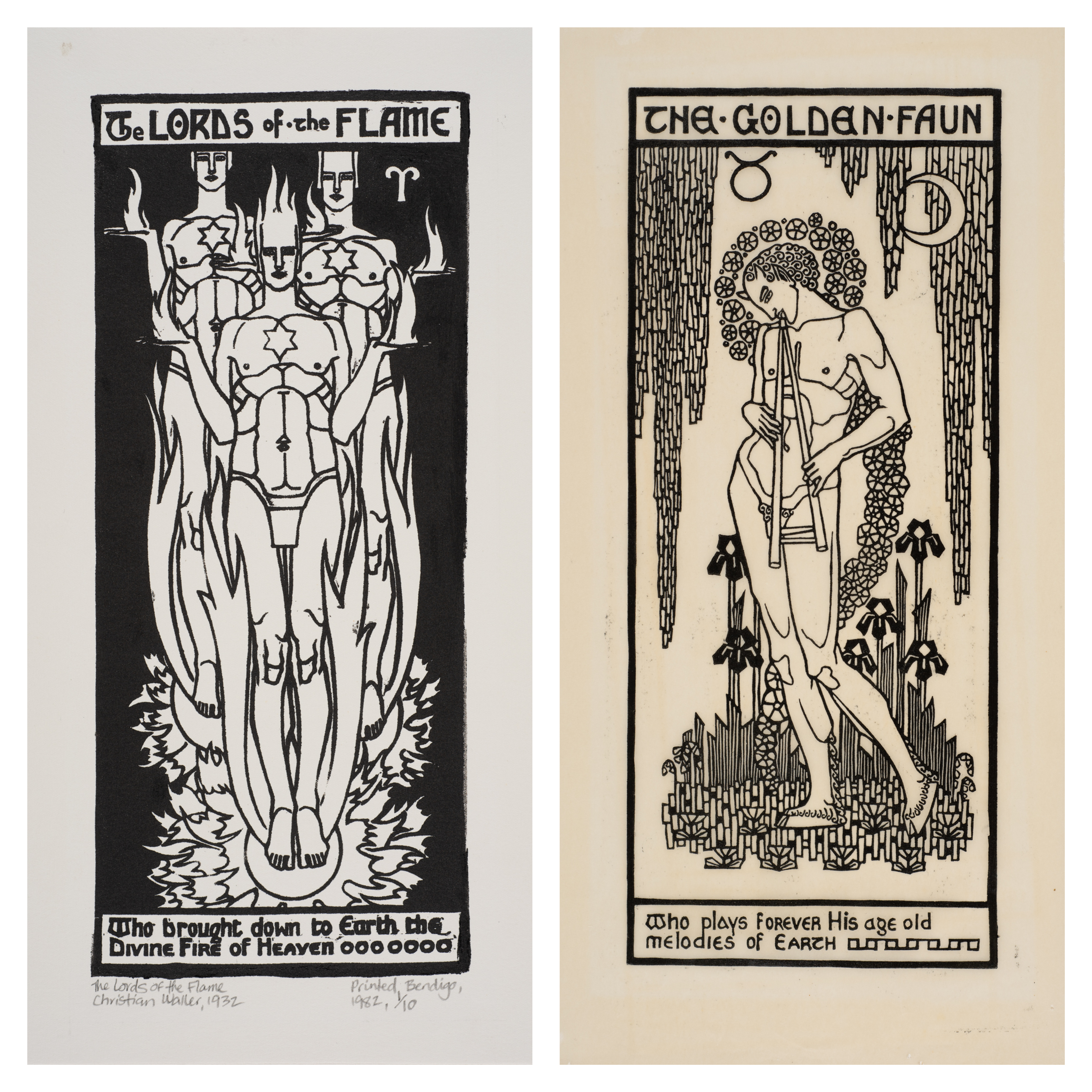Miley on Waller
Dr Caroline Miley reflects on the influence of Theosophy and Hermetic lore on the work of Christian Waller (1894–1954), and the presence of these ideas in the prints and drawings in the collection.
Join Caroline Miley to celebrate the book launch of Christian Waller Stained Glass: Toward the Light on Saturday 27 August at CAM, with an illustrated talk on Christian Waller’s exemplary skills and achievements as an Australian stained glass artist.

Christian Waller and Theosophy
Christian Waller was Australia’s sole woman professional stained glass artist until the craft revival of the 1970s, and was a leading proponent of Modernism in Australian art. She was born in Castlemaine and studied in Bendigo before going to the National Gallery School in Melbourne. While still at the School she became interested in Theosophy, and also began working in stained glass. Her prints and book illustrations were sought after, and her book of seven prints The Great Breath is admired today as it was when first exhibited in 1932. She concentrated increasingly on stained glass, however, and by the end of her life had created over a hundred windows.
Christian was inspired by the Arts and Crafts Movement, Symbolism, the Celtic Revival via WB Yeats and George Russell, and most strongly by Theosophy and Hermetic lore. She was intensely spiritual and developed a unique synthesis of Christianity and Theosophy. These esoteric influences were little understood at the time or subsequently, but her work has been universally admired for its mastery of technique, sumptuous colour, brilliant design and originality.

Right: Christian Waller, Salve, 1932, linocut, 18.6 x 12.8cm. Collection: Castlemaine Art Museum. Ian Hanna Bequest, 1991.
Castlemaine Art Museum has a collection of Christian’s prints and drawings including three from The Great Breath and some interesting greeting cards from the same year, which demonstrate her fascination with Theosophy. One of its primary icons is the six-pointed star, which symbolises the Hermetic doctrine: “As above, so below”. This indicates that all things, whether on the astral or earthly plane, are connected. The aim in all things, then is for harmony and balance. The greeting card for 1932 shows, in a spare manner reminiscent of the Vienna Secession, the Theosophical star shining a beam of light to illuminate water and flowers below.
Another from the same year depicts the silhouette of a figure seated on an elephant. The figure’s head is haloed in a Theosophical star. This must be a World Master, the avatar who Theosophists expected to come and lead the spread of spirituality through the world. The date and the elephant, suggestive of India, make it likely that the figure is Krishnamurti, who was expected to visit Australia and for whom an amphitheatre had been built at Balmoral in Sydney.

Right: Christian Waller, The Golden Faun, from The Great Breath: A Book of Seven Designs, 1932, linocut, 45.8 x 19.0cm. Collection: Castlemaine Art Museum. Ian Hanna Bequest, 1991.
The three plates from The Great Breath depict three of the Root Races described in Madame Blavatsky’s The Secret Doctrine. They are The Lords of the Flame, The Golden Faun and The Magician of the Beautiful. The series is an exposition of Theosophical doctrine about the formation and evolution of the human race. The Lords of the Flame bear the six-pointed star on their breasts, and in their hands the gift of fire. Beside them is Aries, the cardinal fire sign. They are Lemurians who inhabited a large continent near present-day Madagascar.
The Golden Faun is a sensual figure, an Atlantean ruled by Venus and Taurus. These developed speech and the physical body, but became proud and wicked until Atlantis was destroyed in the Flood. The Magician of the Beautiful represents the seventh Race, which in the eternal cycle of planetary rounds will develop again the condition of purity. The ladder denotes ascent and fulfilment and the twelve houses of heaven are the sum of the influences on the human race.
The influences on Christian Waller were varied. She wove them together into her own personal spirituality and expressed them in her art. This set of stunning prints is among the most clear statements in art of the importance of Theosophical ideas to artists of the 1920s and 30s.
Caroline Miley 2022